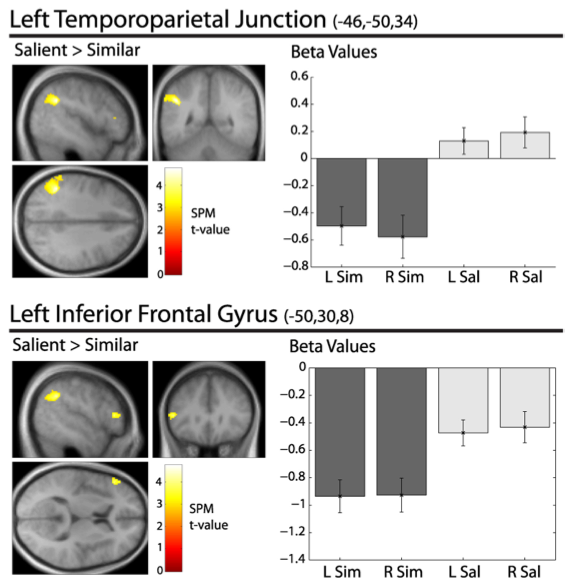How the brain routes traffic for maximum alertness
January 18, 2012
A new UC Davis study shows how the brain reconfigures its connections to minimize distractions and take best advantage of our knowledge of situations.
When concentrating on a specific task (such as understanding a flashing road sign), it’s helpful to reconfigure brain networks so that task-relevant information is processed most efficiently and external distractions are reduced, says Joy Geng, assistant professor of psychology at the UC Davis Center for Mind and Brain.
The researchers used functional magnetic resonance imaging (fMRI) to study brain activity in volunteers carrying out a simple test. The subjects had to look for a letter “T” in a box and indicate which way it faced by pressing a button. They were also presented with a “distractor”: another letter T in a box, but rotated 90 degrees. The distractor was either similar in appearance to the target, or brightened to be more attention-getting.
They compared their results to mathematical models used to infer connectivity between different areas of the brain. Subjects did better in trials with an “attention-getting” distractor than a less obvious one, and specific areas of the brain lit up accordingly.
The new work shows that the brain doesn’t always “ramp up” to deal with the situation at hand, Geng said. Instead, it changes how traffic moves through the existing hard-wired network — rather like changing water flow through a network of pipes or information flow over a computer network — in order to maximize efficiency.
Ref.: Nicholas E. DiQuattro, Joy J. Geng, Contextual Knowledge Configures Attentional Control Networks, Journal of Neuroscience, 2011 [doi: 10.1523/JNEUROSCI.4040-11.2011]
